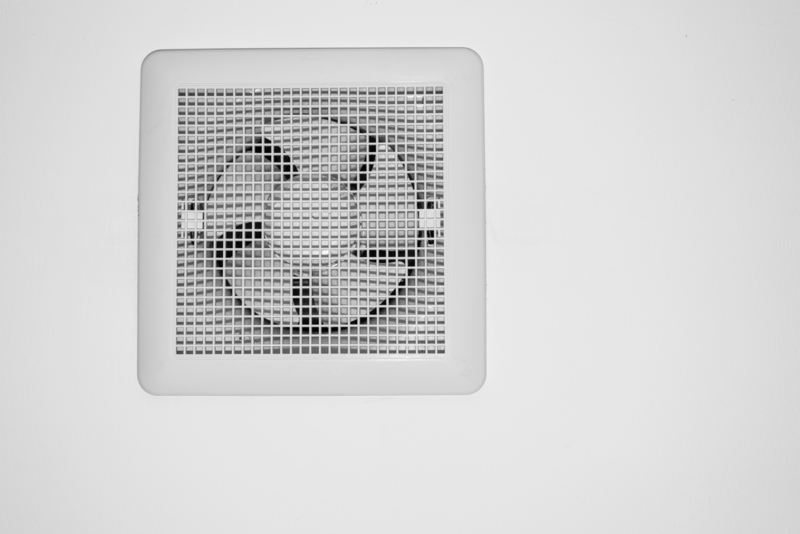Transform Your Dull Jewelry with the Best Cleaning Techniques
Posted on 15/08/2025
Transform Your Dull Jewelry with the Best Cleaning Techniques
If you've ever noticed your favorite ring, necklace, or bracelet looking lackluster, you're not alone. Even the most beautiful pieces of jewelry can lose their sparkle over time, accumulating dirt, dullness, and grime. The good news is that with the best jewelry cleaning techniques, you can restore your jewelry's brilliance and keep it looking stunning. In this comprehensive guide, we share expert tips on reviving your dull jewelry, explore the most effective cleaning methods, and provide invaluable advice to ensure your cherished treasures remain in pristine condition for years to come.
Why Does Jewelry Become Dull?
Before we dive into cleaning solutions, it's helpful to understand why jewelry loses its sparkle. Whether you own gold, silver, platinum, or gemstone pieces, several factors can contribute to a lackluster appearance:
- Everyday Wear: Friction against skin or clothing can lead to surface scratches.
- Exposure to Lotions & Perfumes: Chemicals create a film that dims your jewelry's shine.
- Natural Oils & Sweat: Body oils and perspiration leave residues on precious metals and stones.
- Environmental Pollutants: Dust, dirt, and household chemicals accumulate over time.
- Improper Storage: Storing items together can cause tangling and abrasion.
Understanding these causes is the first step in keeping your jewels radiant and long-lasting.

The Importance of Proper Jewelry Cleaning Techniques
Regular cleaning restores and preserves the brilliance of your jewelry. Whether for sentimental, financial, or aesthetic reasons, maintaining your pieces ensures they retain their value and eye-catching appeal. With the right jewelry cleaning methods, you can prevent long-term damage and get the most out of your collection.
Essential Tools Needed for Effective Jewelry Cleaning
Before getting started, gather the following tools and supplies for the best jewelry maintenance results:
- Soft Bristle Brushes: Perfect for dislodging dirt without scratching metals or stones.
- Lint-Free Cloths: These guarantee a streak-free polish every time.
- Mild Soap: Chemical-free soaps safe for most metals and gems.
- Lukewarm Water: Ideal for soaking and rinsing jewelry.
- Bowl or Container: Dedicated to cleaning your pieces.
- Jewelry Polishing Cloth: Especially for gold, silver, and platinum pieces.
Optional, but useful items include:
- Ammonia (for certain metals): Potent cleaner, but should be used with care.
- Commercial Jewelry Cleaner: Choose reputable brands suited for your jewelry types.
- Ultrasonic Cleaner: Advanced cleaning for professionals or frequent maintenance.
Best DIY Jewelry Cleaning Techniques
You don't always need professional services to clean and revive tarnished jewelry. Here are proven home methods for every type of piece:
1. Cleaning Gold Jewelry at Home
Gold may not tarnish as quickly as silver, but it can still collect residue. For effective cleaning:
- Mix a few drops of mild dish soap in warm water.
- Soak gold pieces for 10-15 minutes.
- Gently scrub with a soft-bristled brush, especially crevices.
- Rinse thoroughly in lukewarm water and pat dry with a lint-free cloth.
Important: Avoid abrasive cleaners or toothpaste, which can scratch gold surfaces.
2. Bringing Silver Jewelry Back to Life
Silver can suffer from tarnish -- a dull, grayish-black film -- due to oxidation. To restore brilliance to your silver jewelry:
- Line a bowl with aluminum foil, shiny side up.
- Add a tablespoon of baking soda and one of salt.
- Pour in hot (not boiling) water and stir gently.
- Soak pieces for 5-10 minutes, allowing the chemical reaction to occur. (You may observe light bubbling.)
- Remove items, rinse, and dry thoroughly with a soft cloth.
This method uses ion exchange to lift tarnish without harsh chemicals.
3. Cleaning Gemstone Jewelry
Gemstones such as diamonds, rubies, and sapphires can lose their luster when covered in oils and dust. Follow these steps:
- Prepare a bowl with warm water and a few drops of mild soap.
- Soak pieces for 5-10 minutes.
- Brush gently around the settings and under the stones with a soft toothbrush.
- Rinse and polish using a lint-free or microfiber cloth.
Never use ultrasonic cleaners with soft stones (like opals, emeralds, or pearls), as vibrations may crack or blemish them.
4. Polishing Pearls and Delicate Jewelry
Pearls and other organic gems require ultra-gentle care:
- Do NOT soak pearls. Wipe each one gently with a slightly damp soft cloth (use only water, no soap).
- Let pearls air dry completely before storing.
- Restring pearls periodically if worn frequently, as thread may stretch or weaken with use and cleaning.
Pro Tip: Store pearls separately from harder gemstones to prevent scratches.
5. Reviving Costume and Fashion Jewelry
Costume jewelry can be especially prone to tarnish and fading. To restore shine to fashion jewelry:
- Dip a cotton swab in a mix of mild soap and water. Spot-clean each item; avoid soaking.
- Pat dry and polish gently with a clean, soft cloth.
Avoid abrasive materials and excessive moisture, which may damage glued components or plating.
Advanced Jewelry Cleaning Techniques for Stubborn Tarnish
Dealing with persistent tarnish or grime? Try these next-level approaches for restoring your most cherished pieces:
Using an Ultrasonic Jewelry Cleaner
Ultrasonic cleaners use high-frequency sound waves to remove dirt from hard-to-reach areas. These are ideal for diamonds, gold, and platinum (never for pearls or certain gemstones). Always follow the manufacturer's guidelines:
- Fill the tank with the recommended cleaning solution.
- Insert jewelry and run the cleaning cycle.
- Rinse thoroughly and dry with a lint-free cloth.
The result? A deep, professional-level cleaning without scrubbing.
Jewelry Cleaning Solutions & Polishes
Commercial cleaners are formulated for different jewelry types. Choose a product that's specifically labeled for your metal or gemstone:
- Gold/Silver Cleaner: Dip jewelry briefly and rinse. Avoid overexposure to prevent metal erosion.
- Gemstone Cleaning Solution: Check compatibility with your stone before use.
Always read instructions carefully, and test on a small, inconspicuous area first.
Jewelry Storage Tips for Long-Term Shine
Prevention is just as crucial as cleaning. Here's how to keep your jewelry sparkling for the long haul:
- Store pieces separately in soft pouches or lined boxes to avoid scratching.
- Keep away from sunlight and humidity, which accelerate tarnish and color changes.
- Remove jewelry before exercising, swimming, or showering to limit exposure to sweat, chlorine, and soaps.
- Do a quick wipe-down after every wear to remove traces of oil or dirt.
The Biggest Jewelry Cleaning Mistakes to Avoid
Even with the best intentions, mistakes can lead to diminished shine or even permanent damage. To keep your jewelry in top shape, never:
- Soak soft stones: Pearls, opals, and emeralds can absorb water or cleaning chemicals.
- Use bleach, ammonia, or abrasive chemicals: These can erode metals and damage settings.
- Scrub with toothbrushes marked as "medium" or "hard": Only soft-bristled brushes should touch your jewelry.
- Apply ultrasonic cleaning to fragile or antique pieces: Work with a professional instead.
When in doubt, consult a jeweler before cleaning rare or vintage items.
How Often Should You Clean Your Jewelry?
The frequency of cleaning depends on how often you wear your pieces and the materials involved. As a rule of thumb:
- Everyday jewelry (wedding bands, studs, watches): Once every two weeks.
- Special occasion pieces: After each use or every few months.
- Family heirlooms and antiques: Seek professional cleaning annually.
Consistent professional cleaning is recommended to check for loose stones or weakened prongs.
Why Professional Jewelry Cleaning Matters
While at-home jewelry cleaning is practical, periodic professional maintenance is vital to:
- Identify hidden issues (loose stones, worn settings).
- Receive a thorough, safe cleaning for delicate treasures.
- Maintain warranties with certified care.
Some jewelers offer complimentary cleaning for purchased pieces, so be sure to take advantage!

Frequently Asked Questions About Reviving Dull Jewelry
Q1: Can vinegar be used to clean jewelry?
A: Vinegar is effective for some metals but can damage others or certain stones. Avoid vinegar for pearls, opals, or soft/porous gems.
Q2: How do I restore antique jewelry safely?
A: Always consult a reputable jeweler for antique jewelry. Home cleaning may risk irreparable harm to delicate or historic pieces.
Q3: What if my silver jewelry keeps tarnishing?
A: Store silver in anti-tarnish cloths or bags and clean regularly using gentle methods outlined above. Avoid humidity and chemical exposure.
Conclusion: Bring Your Jewelry Back to Life!
Nothing beats the confidence and delight of wearing brilliantly sparkling jewelry. By following the best jewelry cleaning techniques outlined here, you can revive and transform your dull jewelry--ensuring each piece always looks its best, whether it's a modest pendant or a dazzling heirloom. The key is gentle, consistent care. Remember: your jewelry is as special as the person wearing it. With the right knowledge and a few simple tools, you can keep every piece shining for generations to come.
Start revitalizing your collection today--your jewelry will thank you!




